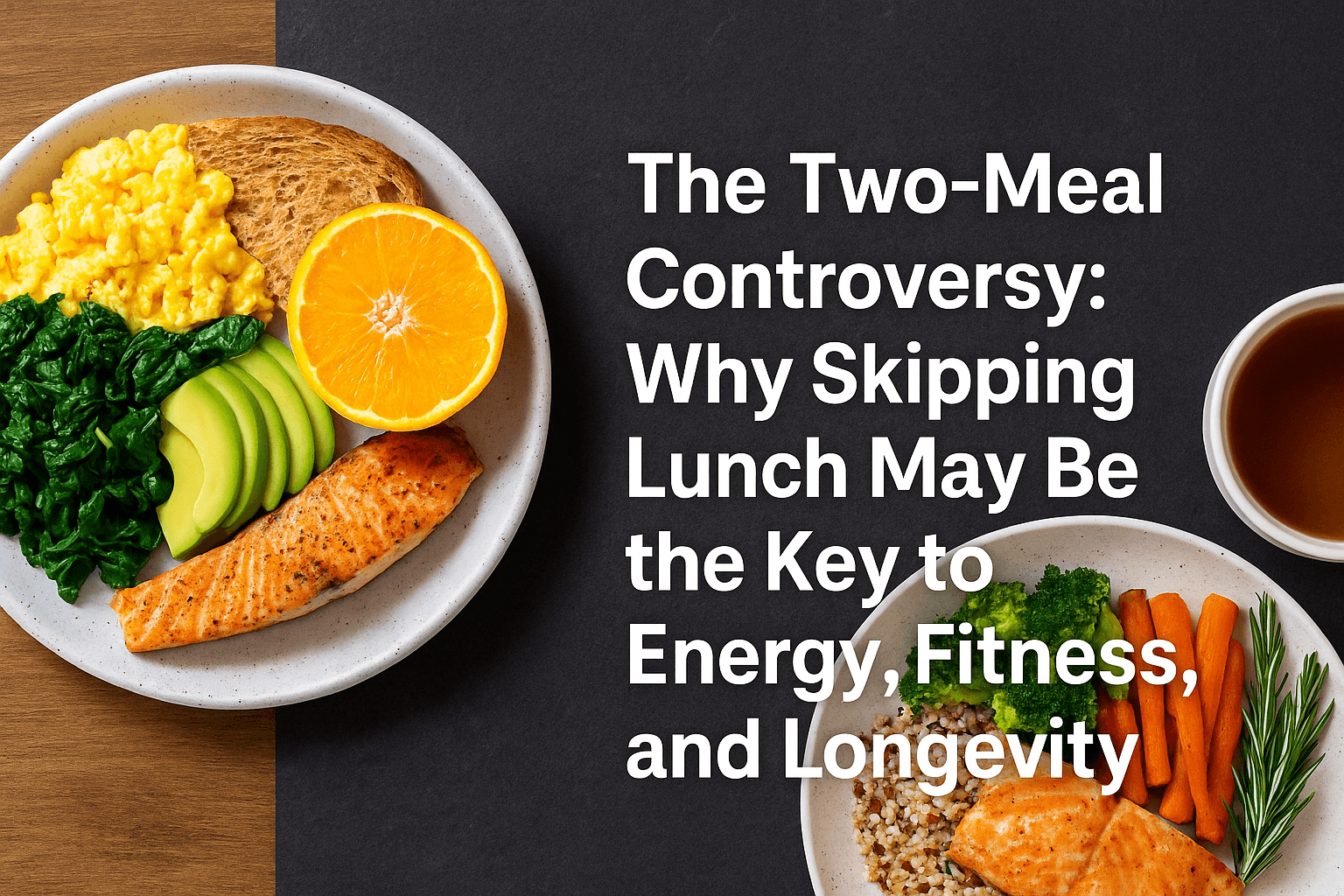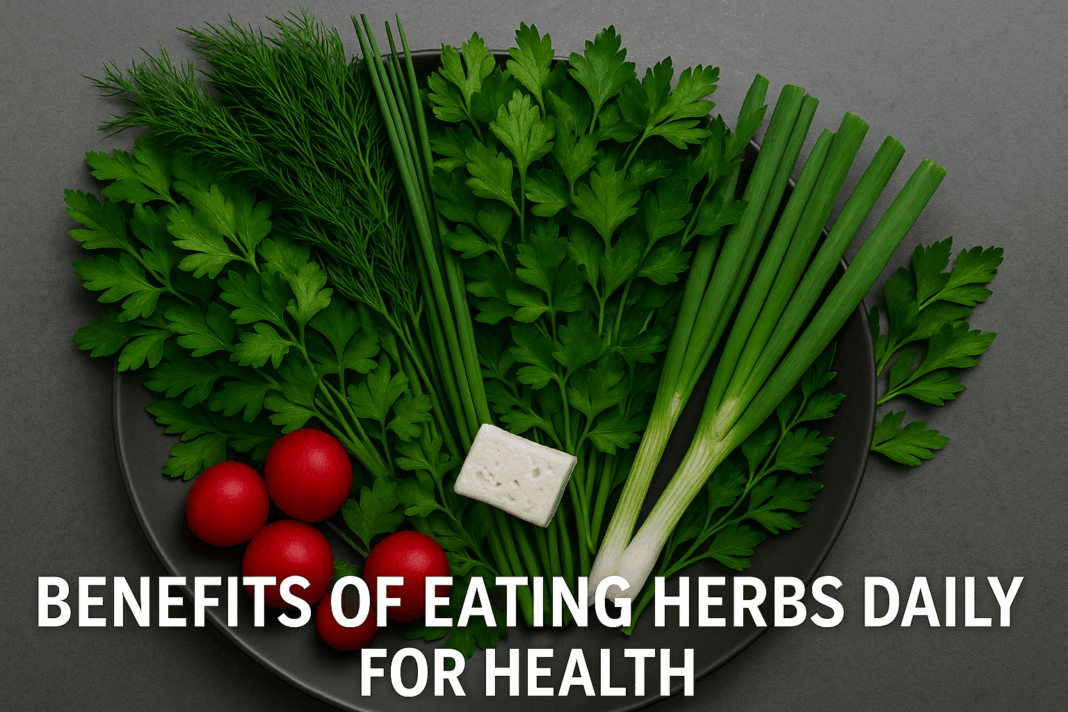Exercise Daily _ The Two-Meal Controversy: Why Skipping Lunch May Be the Key to Energy, Fitness, and Longevity
Forget everything you’ve been told about three meals a day. Is eating twice a day healthy? Many experts now argue it’s not only healthy but also aligned with our biology, history, and metabolism…
Emerging science, ancient wisdom, and historical eating patterns are converging around a radical but increasingly convincing idea: eating only twice a day—a strong breakfast and a moderate early dinner—might be the most natural, energizing, and weight-friendly way to live.
A Historical Glimpse: Humans Weren’t Built for Lunch
Historically, lunch is a modern invention. Our ancestors didn’t have designated mid-day meals. Instead, they followed natural cues: a nourishing morning meal to break the fast and a post-labor evening feast.
In ancient Rome, people typically ate only two meals a day: ientaculum (breakfast) and cena (dinner). Lunch (prandium) was more of a snack and was often skipped by the upper class entirely.
In agrarian societies, the mid-day meal was impractical due to long hours of manual labor. Food was about fuel, and the body functioned best with early and evening nourishment.
Religious and Cultural Patterns Support It
Across world religions and spiritual traditions, the two-meal pattern is standard—not an exception.
- Islam: The Quran mentions two primary eating times—Suhoor (pre-dawn) and Iftar (sunset)—but never lunch. Morning meal and breaking the fast at sunset, not midday.
- Christianity: Biblical references often speak of “breaking bread” in the morning and evening. Early Christian monks followed strict schedules that excluded lunch entirely.
- Buddhism: Monks traditionally eat only once or twice before noon. Post-noon eating is discouraged to maintain energy and spiritual focus.
- Ayurveda: Advises eating with the rhythm of the sun: a light breakfast, a mid-day meal when digestion peaks, and no food after sunset.
These traditions weren’t coincidental. They aligned eating patterns with natural biological rhythms long before modern science caught up.
Lunch: A Product of the Industrial Age
Lunch became institutionalized during the Industrial Revolution when factory workers needed a mid-day break. It evolved into a heavy, routine meal not because the body needed it, but because labor schedules dictated it. Today’s 9–5 workday culture perpetuates that pattern — even if it no longer serves us biologically.
The Science Behind Skipping Lunch
Eating just two meals a day — a nutrient-dense breakfast and an early dinner — aligns with the body’s circadian rhythm. According to the NIH 2018 study on time-restricted eating, this pattern improves insulin sensitivity, reduces inflammation, enhances mental focus, and helps with fat loss.
Why Lunch Makes You Sluggish
The post-lunch energy crash is real. After a heavy mid-day meal, the body diverts blood from your brain and muscles to your digestive organs. This is called “postprandial somnolence.” Research from circadian biology studies confirms that digestion during inactive hours causes fatigue, poor focus, and metabolic sluggishness.
Smart Mid-Day Snacking (When Needed)
If truly hungry, opt for light, hydrating foods: dates, soaked almonds, yogurt, fruit, or a protein smoothie. These give your body what it needs without triggering inflammation, spikes in insulin, or digestive overload.
The Athletic Edge: Two Meals and Peak Performance
The idea that you need five to six meals a day to maintain energy and build muscle has been debunked. A study in the Journal of the International Society of Sports Nutrition found that nutrient timing and quality matter far more than frequency.
A strong breakfast increases morning cortisol (naturally high), improves hormonal balance, and jumpstarts glycogen replenishment. An early dinner supports post-training recovery while allowing your gut to rest before sleep.
Bodybuilding ≠ Longevity or Wellness
Let’s be honest: massive muscle doesn’t equal health. How many bodybuilders who ate six to eight meals daily in the 1980s, 1990s, or even 2000s are thriving into their 70s or 80s? Very few.
Muscle bulk might look impressive, but it often comes with chronic inflammation, oxidative stress, and long-term hormone disruption. Real wellness is not about biceps — it’s about metabolic flexibility, joint mobility, energy, gut health, and cognitive clarity.
Fitness should serve function, not ego. Longevity doesn’t come from constant feeding and bulking — it comes from balance and recovery.
Digestive Benefits: Let Your Gut Rest
Your digestive system thrives when it has time to rest. According to research in Gut Journal, excessive eating frequency disrupts microbiota balance, increases permeability (leaky gut), and taxes the immune system.
Eating twice daily activates processes like:
- Autophagy: the body’s cellular detox system
- Improved microbiome health: better digestion, mood, immunity
- Efficient nutrient uptake: less digestive stress, better absorption
Debunking the “Eat Every 3 Hours” Myth
The fitness industry has pushed the idea that small, frequent meals stoke metabolism. But a 2017 meta-analysis from UAB found no thermogenic or weight loss advantage to frequent eating. In fact, fewer meals correlated with better insulin control and lower fat storage.
Sample Two-Meal Daily Plan
- 7:00 AM – Breakfast: Eggs, avocado, sweet potato, berries, green tea
- 1:00 PM – Optional Snack (if needed): Greek yogurt, protein smoothie, or handful of nuts
- 5:30 PM – Early Dinner: Grilled salmon or lentils, roasted vegetables, quinoa, and chamomile tea
Tip: Avoid eating after 7:00 PM. This supports hormone regulation, detox pathways, and better sleep.
Why It Supports Weight Loss and Longevity
Research shows that limiting your eating window can:
- Reduce visceral fat by 5–8%
- Lower markers of inflammation (CRP, IL-6)
- Support mitochondrial health and cell repair
- Promote stable energy, mental focus, and better sleep
This isn’t a quick-fix diet — it’s a lifestyle. It respects the body’s natural cycles and is sustainable long term.
Final Thought: Simplicity = Sustainability
The two-meal rhythm is not new. It’s how humans have eaten for thousands of years — before processed snacks, energy drinks, and fitness marketing took over. It’s how monks, nomads, and warriors maintained strength, clarity, and resilience.
It’s not about starving. It’s about aligning with biology. Because health isn’t about how much you eat — it’s about when, why, and how it fuels you.
Eat daily. Sleep daily. Exercise Daily.
Disclaimer: This article is for informational purposes only. Always consult a healthcare provider before making dietary changes.




